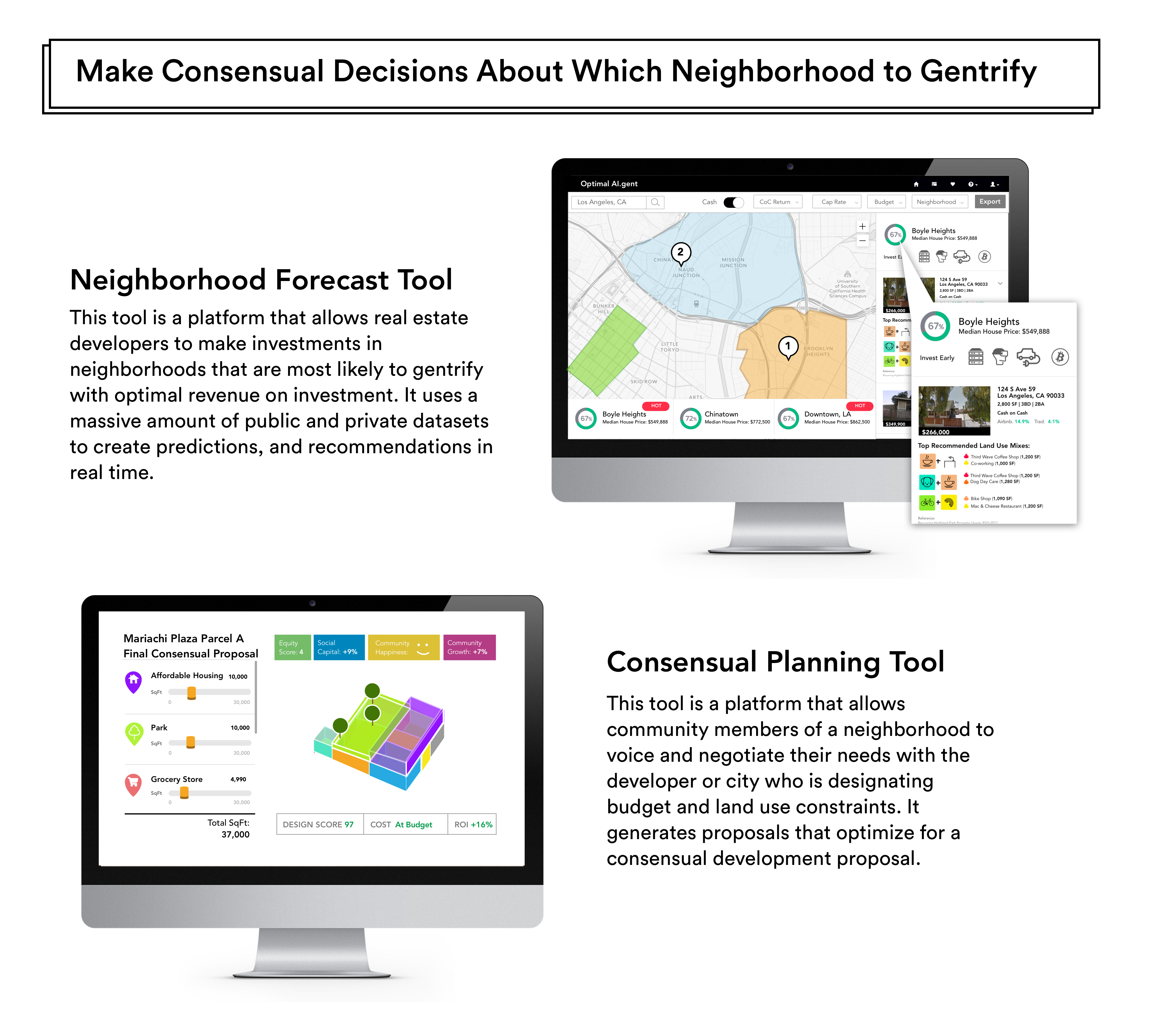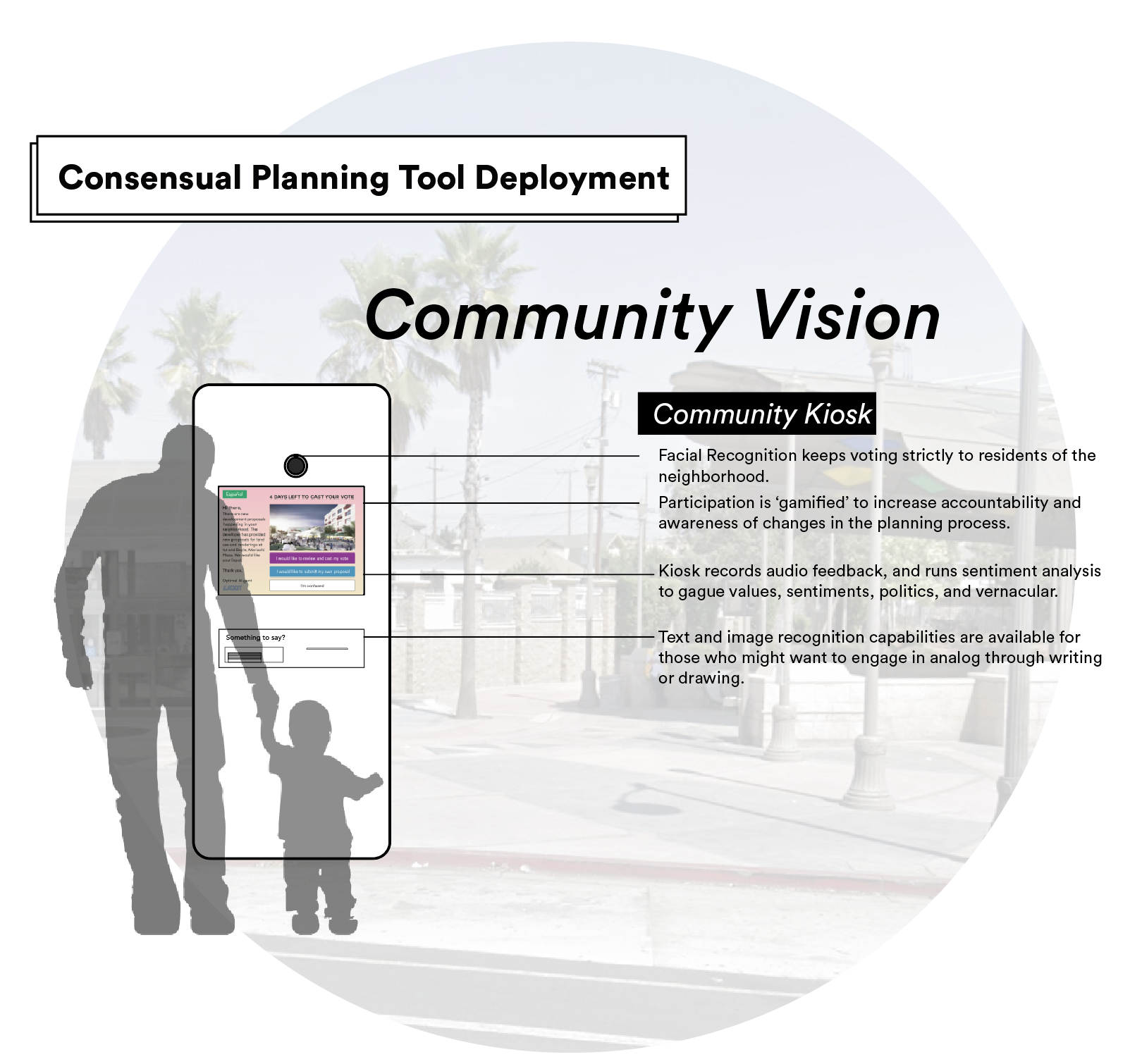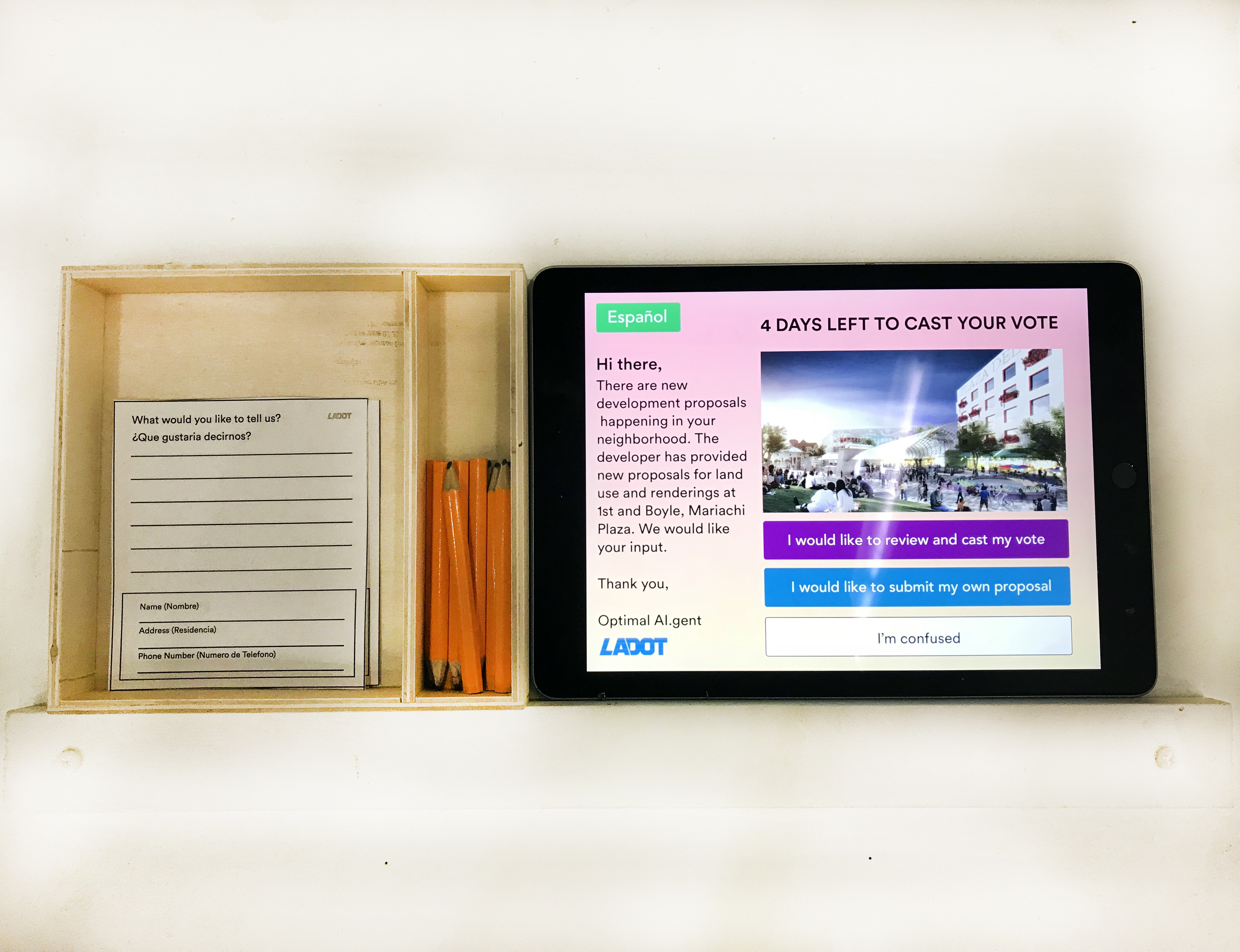AI.gents of Neighborhood Change:
Leveraging Predictive Analytics for Developing in the IoT Era


*The Neighborhood Forecast Tool interface was influenced by and informed by real data collected from MashVisor, a startup that provides real-time forecasting for profitable home investments based on Cash on Cash, Airbnb and Traditional real estate metrics.
How can Artificial Intelligence help real estate developers, cities, and community members negotiate a resolution on urban development?
Summary
As cities prepare for the transition to The Internet of Things and Articial Intelligence economy, there is little investment in planning for the urban impact of this transition at the local scale. Now more than ever, it is crucial to prioritize humans over capitalism and and ways to mediate technological advancement with cultural preservation, and critically engage with communities to forecast what ‘smart city’ changes mean for them and their neighborhood. Focusing on ‘smart’ redevelopment of a Metro station called Mariachi Plaza in a predominantly Latinx neighborhood, Boyle Heights, this project proposes that articial intelligence, while designed to optimize for efficiency and profit, can be reconfigured to optimize for other goals in the planning process, such as equity, cultural values, and historical preservation. Following the logic of predictive analytics machine learning models, Optimal Ai.gent is a predictive analytics tool designed for community members to create custom machine learning models that will generate optimal ‘futures’ that provide alternative investment proposals on land use for developers and urban planners to consider and further configure to reach a consensus on decision making.

Laurie Avocado / Flickr creative commons
Context
Boyle Heights is a predominantly Latino, low-income neighborhood adjacent to Downtown Los Angeles that is currently undergoing gentrification with great resistance towards gentrifiers that do not integrate itself with community consensus. While many of the current proposals for developing Boyle Heights include retail, clinics, and housing, I predict that in 5-10 years, due to it proximity to Downtown Los Angeles, the land proposals will shift from providing traditional brick and mortar services to those that serve a ‘smart citizen’ demographic spilling over from Downtown Los Angeles. This prediction stems from research done on historical gentrification patterns near city centers and transportation hubs, buy low sell high strategies in real estate development, and trends in products and services currently being developed in the Internet of Things industry.

A notional map of the Quayside neighbourhood, image courtesy of Sidewalk Toronto
SideWalk Labs, a Google Aphabet company, is one company that is already taking steps to create a smart neighborhood in Toronto, Canada. However, on the list of many questions is how they plan on integrating with the community during the development process, due to bad reception from the public on their previous LinkNYC project, where they installed wifi Kiosks in old telephone posts that potentially puts vulnerable populations at risk for more surveillance. Link NYC since then has actually deployed a similar solution to the one I propose, bringing ‘participatory budgeting’ to the interfaces of those kiosks, allowing New Yorkers to vote on budget proposals in their city. As the LinkNYC project stands for showing the ‘power of digital tools for public good,’ how might the design of similar interfaces allow for community participation in nuanced development propositions? How might they engage the user in the conversation, or provide missing information?
How might a consensus be made where infrastructure for the Internet of Things is met halfway with the community members’ needs?






Final Presentation



Conclusion
Feedback I’ve gotten for this initial proposal is that it is a good approach to finding new medium and sophisticated artificial intelligence/machine learning techniques to inform and engage stakeholders in the planning process. The design of future metrics, such as Equity, Social Capital, Community Growth, or “Design Score” are metrics that seem most interesting to explore for many. The next steps I am most interested in taking is designing the interface for which community members design and then preview their proposals using several media that might combine both programmatic renderings and data like virtual reality, augmented reality, simulations, and maps. Having a focus group or a community such as the one I have used in this project would be most ideal to bringing this tool to a live pilot.
Questions Moving Forward
Questions Moving Forward
- What is optimization and who is defining it?
- What is the interface design between humans and machine?
- What are the design strategies to make the co-creation process more inclusive and accessible?
- What is the media or experience that might provide a new approach or preview of said futures? (VR, AR, Physical Models, Diagrams, Games, Simulations, Screens?)